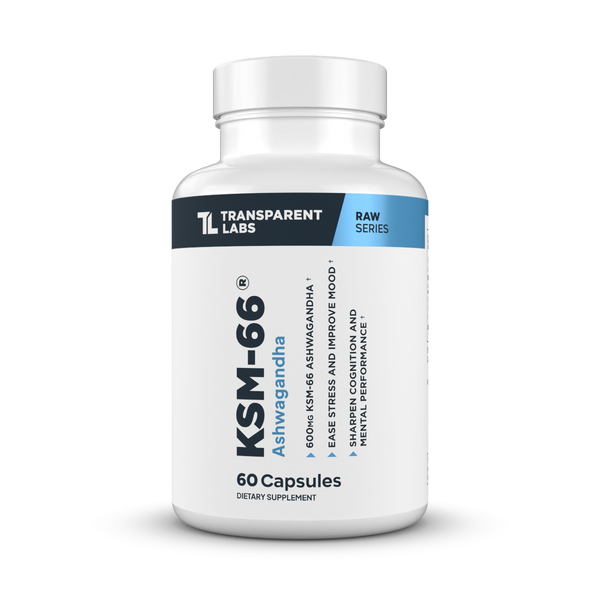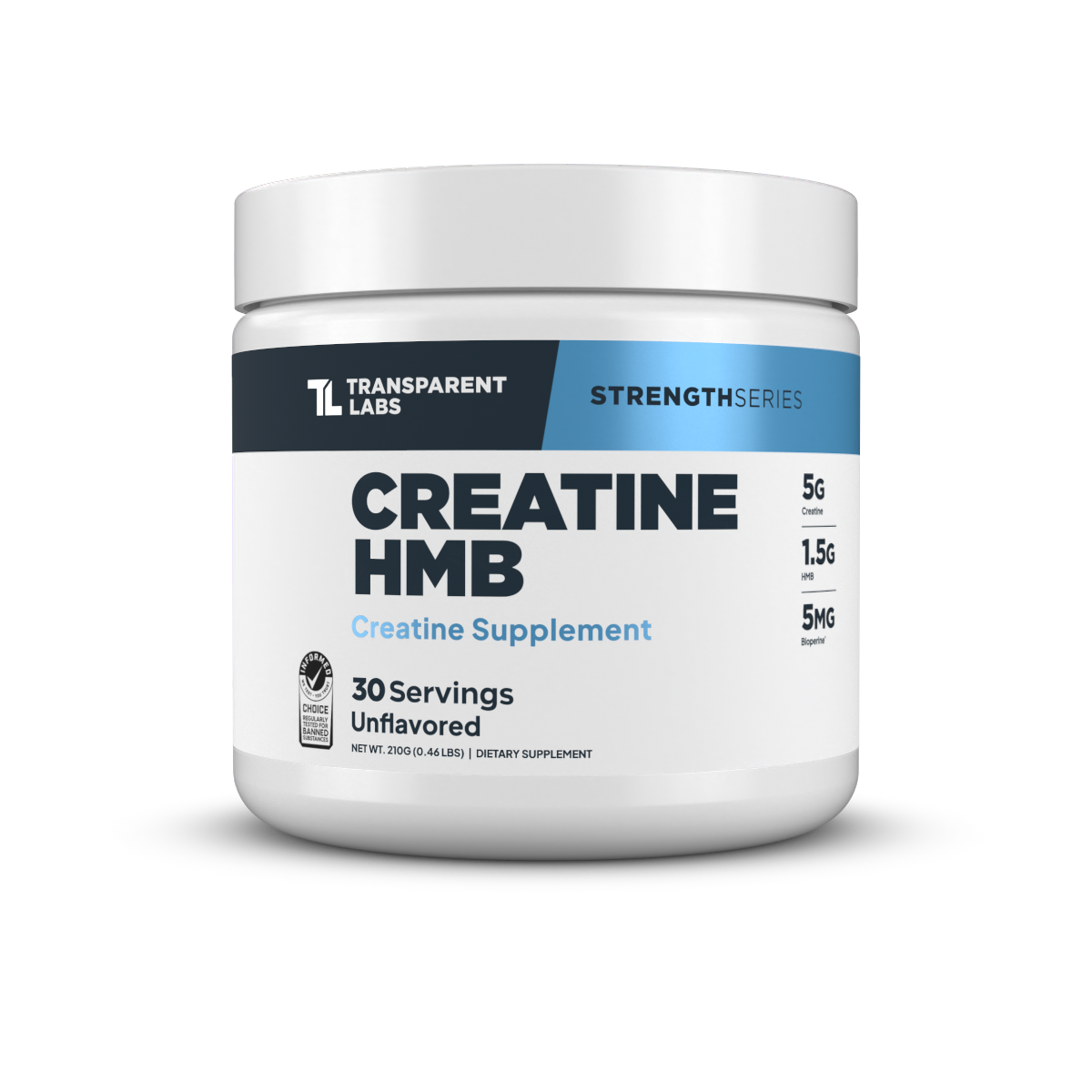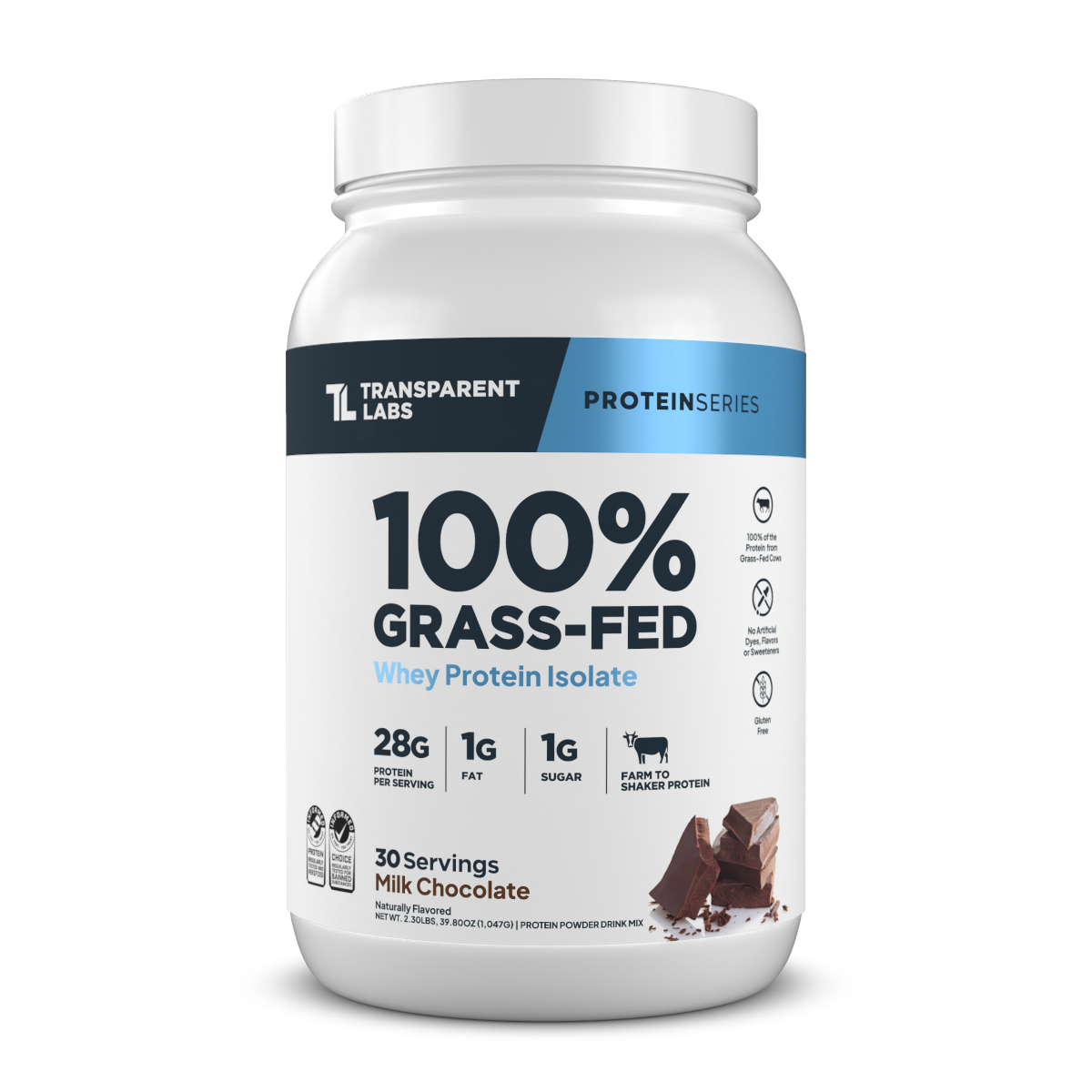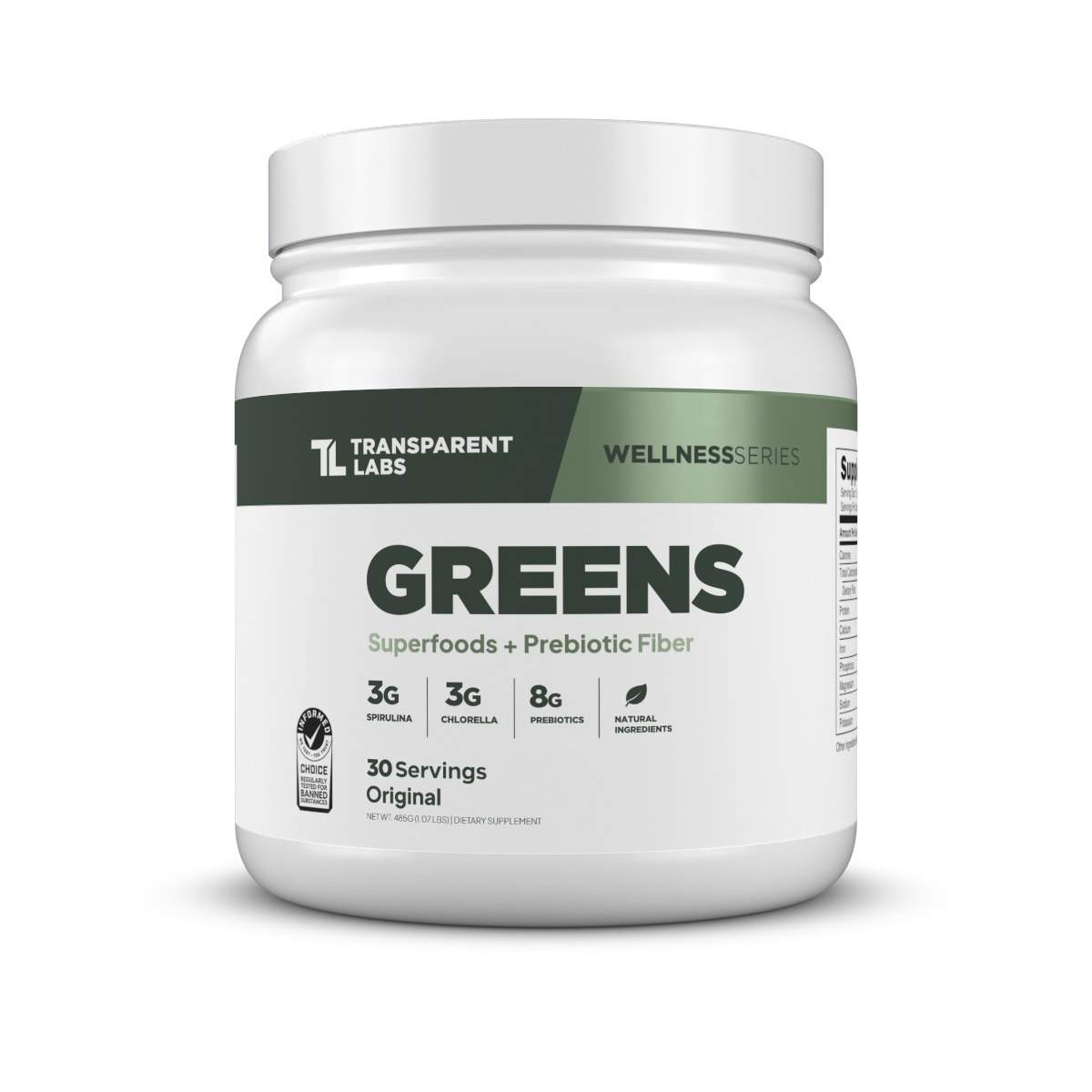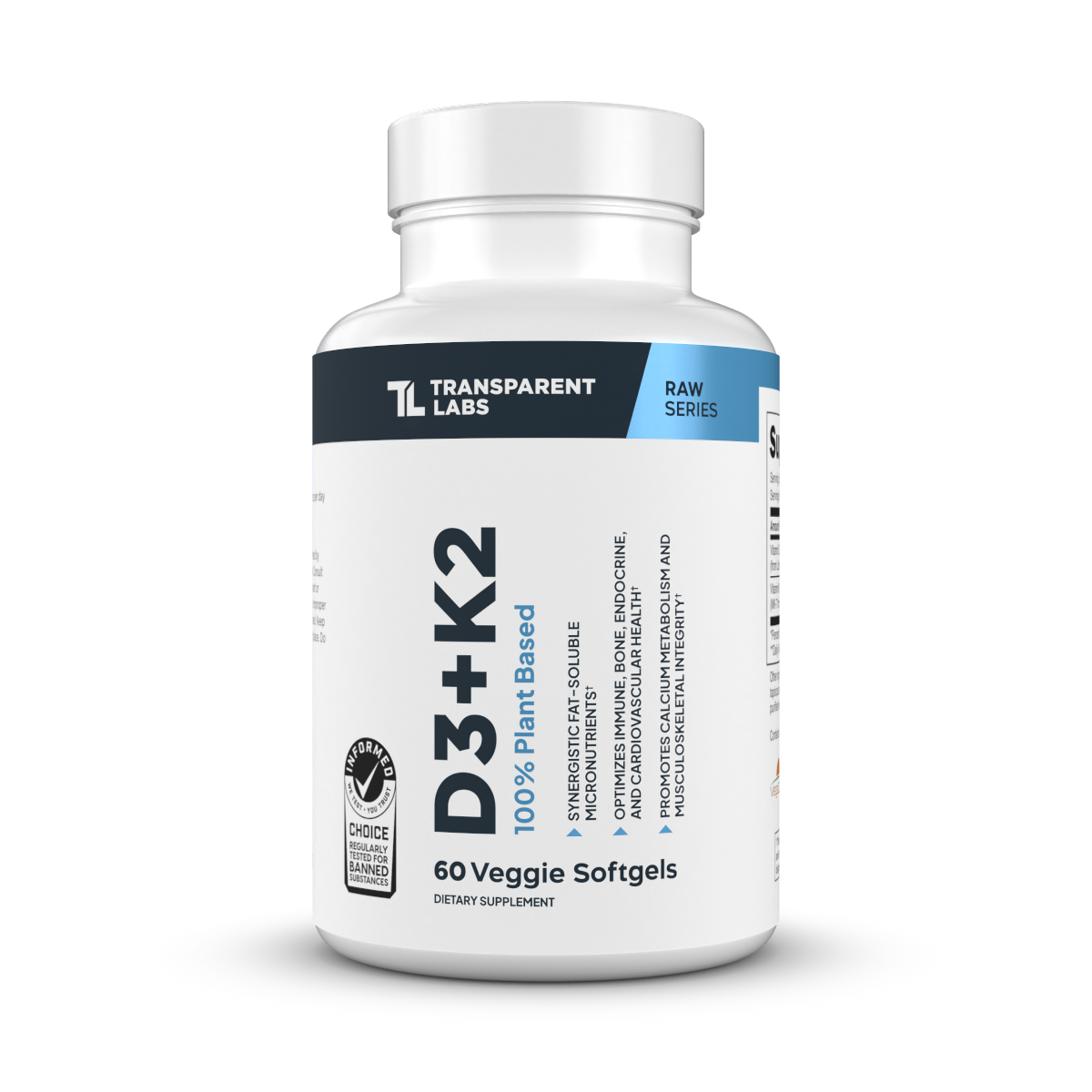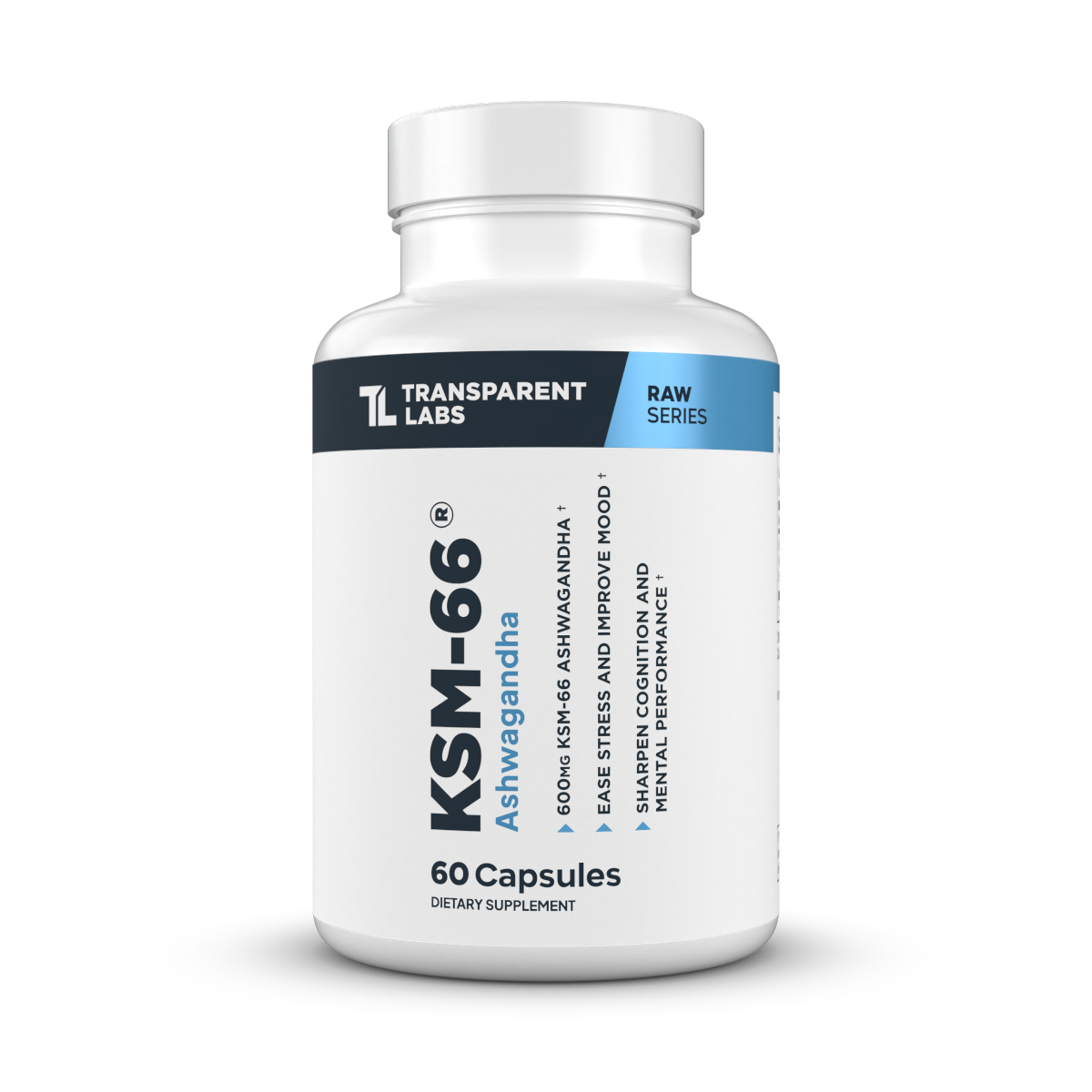
KSM-66 Ashwagandha
Serving Size:
Third-Party Testing
We believe trust is earned through transparency. That’s why we provide full access to our third-party test results, so you can feel confident in what you’re taking. View all third-party tests.

Transparent Labs KSM-66® capsules are the perfect option if you're after a high-quality, organic, and standardized Ashwagandha (Withania somnifera) extract.
Each capsule provides the clinically studied dose of 600 mg KSM-66®, which is the most extensively studied ashwagandha extract available, standardized to contain 5% bioactive withanolides.
Ashwagandha is arguably the most versatile adaptogenic herb known to man. Its multifunctional benefits are the subject of ongoing research, with studies thus far showing that it controls stress and anxiety, eases inflammation and fights oxidative stress, improves mood and mental performance, promotes healthy metabolic, endocrine, and immune function, and supports sexual function.

Orders in the US over $99 ship free.
Once your order has shipped out from our fulfillment center, you will receive a Shipping Confirmation email. If you selected a tracked shipping method, you will receive your tracking information, along with the necessary steps to track your order, within this email. Please note, orders are generally fulfilled same day or next business day.
Click here for the full shipping and delivery guide »
45 Day Satisfaction Guarantee
If you are not satisfied with your product, we will offer you a full refund or store credit for the value of the item within 45 days of delivery.
Click here for the full refund policy »
why use KSM-66 Ashwagandha?
Transparent Labs KSM-66® Ashwagandha is a root extract standardized for 5% withanolides to support stress relief, cognition, hormonal health, and vitality.
Reduces Stress & Anxiety
Lowers cortisol to support stress management, promoting relaxation, emotional stability, and mental clarity.

Enhances Cognitive Function
Clinically shown to improve cognitive performance, focus, and overall mental well-being.

Supports Healthy Hormones
Naturally balances cortisol and testosterone, promoting vitality, mood, and sexual function.

Organic & Clinically Validated
Contains standardized, organic ashwagandha root extract with third-party tested purity and potency.

Key Ingredients
KSM-66® Ashwagandha (Withania somnifera Root Extract)
600 mg
A clinically validated, organic adaptogen that reduces cortisol, supports cognition, mood, hormonal balance, muscle recovery, and resilience to physical and mental stress.


